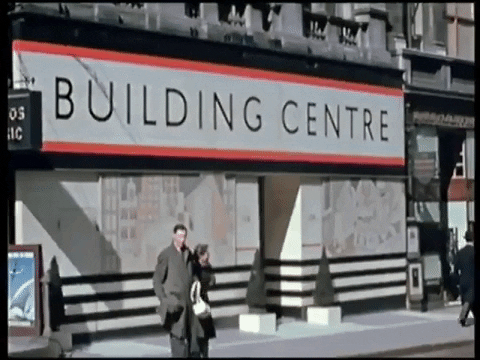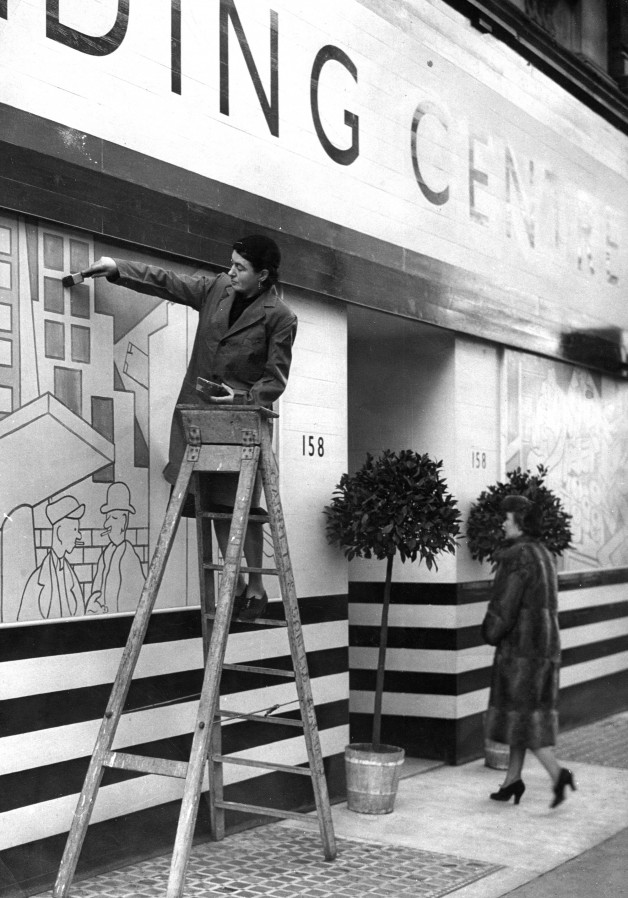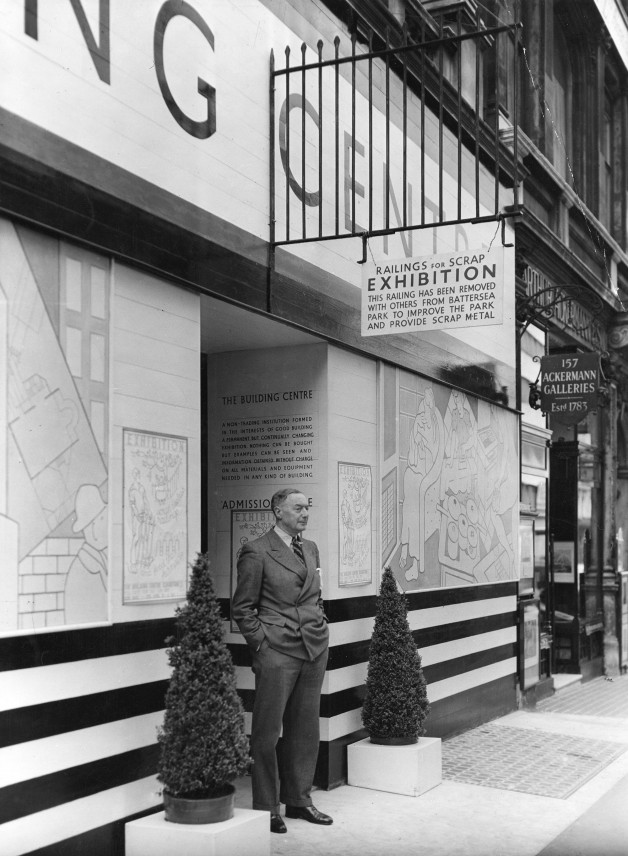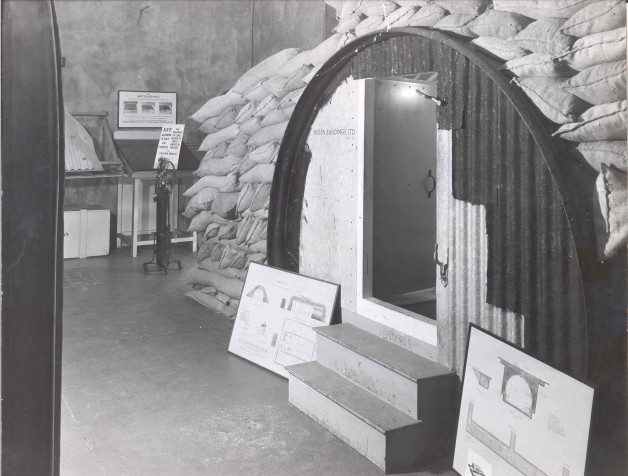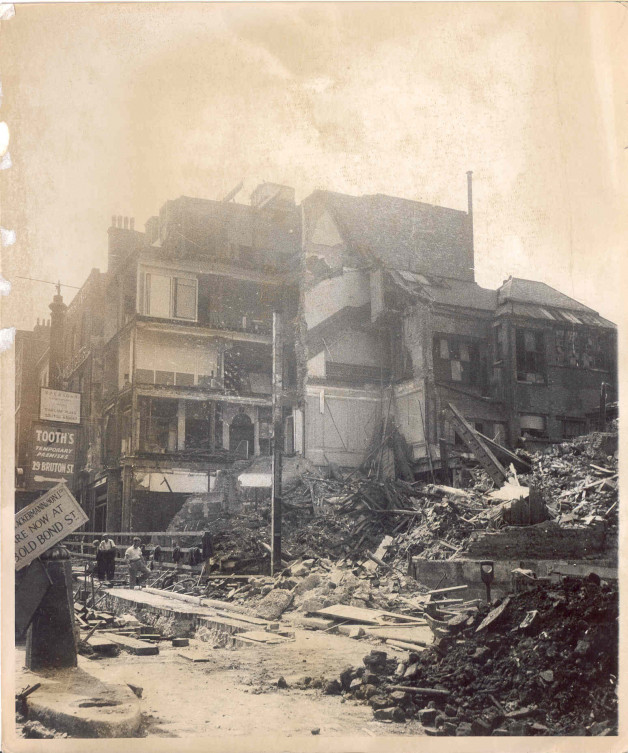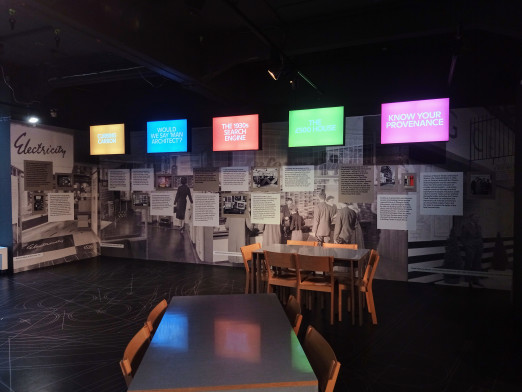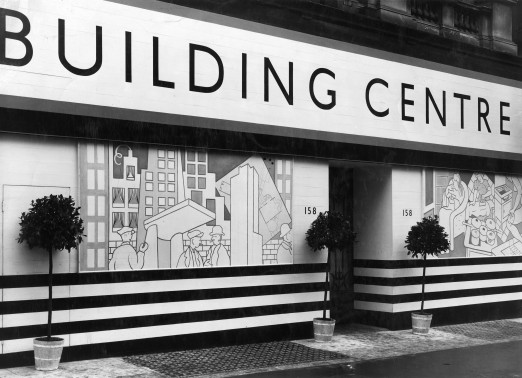With isolation setting in across the nation and cultural institutions, shops and businesses closing their doors it is a grave, although not unprecedented, time. We look back to the last time the Building Centre closed (briefly) to the public 80 years ago.
The Building Centre, 158 New Bond Street, was only seven years open by the time war broke out in Europe in 1939. With Giles Gilbert Scott appointed president the same year, the Centre’s work showcasing the best in contemporary building and materials to the industry and public was on an upward trajectory.
Indeed, in the first six months of 1940 an average of 500 people visited the Centre a week, despite the outbreak of war. It was decided in the circumstances that the Building Centre would reduce its services but would continue to hold exhibitions that documented responses to the war effort in the built environment.
Behind shop windows protected from shattering by blackout murals, designed and painted by Marjorie Morrison as a war-time commission, one of the six exhibitions mounted included Railings for Scrap. During the war iron fencing that had previously delineated private urban garden squares and encircled many city parks were cut down, melted and used for manufacturing munitions.
The result was a great opening of green spaces that for the first time became accessible to all Londoners, regardless of social status or wealth. Evidence of this movement is still visible just around the corner from the Building Centre’s current location on Store Street, where at Malet Street Gardens short stumps are all that remain of railings that were sawn away during the war.
The Building Centre had in fact anticipated the war and programmed accordingly, with an installation in 1938 of a special ‘Air Raid Precautions’ exhibition which was subsequently also held at Charing Cross Underground Station. However, despite foresight and earnest forward planning, nothing could prepare the Building Centre for the air raid of 11-12 May 1941 which saw the destruction of 158 New Bond Street.
This forced the Centre to cease its wartime activities, which had extended to lectures, space for an Architects’ Atelier and the hosting of the Architectural Association’s School of Planning and Research. However, on 21 May it was resolved that the Building Centre would continue to undertake as much valuable work as could still be done during the war period in order to support the demands of post-war reconstruction. Severe cuts were made due to pressures of the time but, determined that work should carry on, Director Frank Yerbury found money from his own resources to pay the wages of junior staff. The Building reopened at its new home, 9 Conduit Street, in 1943 where it continued its work until the end of the war.
